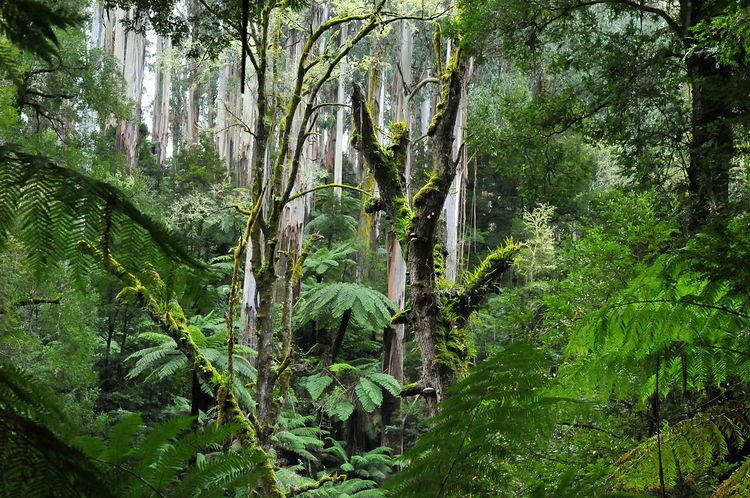Area 15.22 km² Established 1986 | Visitation 80,000 (in 1995) Phone +61 13 19 63 | |
 | ||
Managing authorities Website Tarra-Bulga National Park Hours Open today · Open 24 hoursMondayOpen 24 hoursTuesdayOpen 24 hoursWednesdayOpen 24 hoursThursdayOpen 24 hoursFridayOpen 24 hoursSaturdayOpen 24 hoursSundayOpen 24 hoursSuggest an edit | ||
The Tarra-Bulga National Park is a national park located in the south Gippsland region of eastern Victoria, Australia. The park is located 33 kilometres (21 mi) south of Traralgon on the Traralgon-Balook Road.
Contents
The 1,522-hectare (3,760-acre) national park is situated approximately 240 kilometres (150 mi) east of Melbourne and 24 kilometres (15 mi) north of Yarram in the eastern part of the Strzelecki Ranges. The park is home to one of the last remnants of the indigenous eucalypt forests which once covered the region. The undisturbed mountain ash forests, fern gully communities and associated Myrtle Beech stands within the park are of considerable biogeographical significance.
HistoryEdit
The area was first set aside as Bulga National Park in 1904, comprising 20 hectares (49 acres). In 1909 Tarra Valley National Park was designated nearby, with 303 hectares (750 acres) reserved. Over the years the two parks were gradually enlarged and then merged as the Tarra-Bulga National Park, proclaimed on 17 June 1986 (1986-06-17).
FeaturesEdit
There are numerous walking tracks that emanate from the picnic areas. The Tarra Valley Rainforest Walk is a short and easy walk taking in Cyathea Falls, and the Fern Gully Nature Walk, passes over Corrigan's Suspension Bridge, which stretches through the rainforest canopy with views of the fern gully below. The three- to four-day 100-kilometre (62 mi) Grand Strzelecki Track connects the park with the adjacent Morwell National Park.
The park is a popular tourist attraction with a visitor centre, picnic areas with tables, fireplaces shelters and toilets. The visitors centre is open on weekends and school and public holidays. It is staffed by members of the Friends of Tarra-Bulga National Park who also undertake restoration and monitoring activities.
Since 22 October 2010, the national park is jointly managed by Parks Victoria in partnership with the Australian Aboriginal Gunaikurnai people, who are the traditional owners of the land.
Flora and faunaEdit
The deeply incised river valleys of the park are dominated by wet sclerophyll tall open forest of mountain ash (Eucalyptus regnans), with an understory of blackwood (Acacia melanoxylon), hazel pomaderris (Pomaderris aspera) and tree ferns (Dicksonia antarctica and Cyathea australis). Pockets of the park feature cool temperate rainforest, including Myrtle Beech Nothofagus cunninghamii. The ridges are dominated by open forest and low open forest of stringybark eucalypts and gums. The park is also noted for its diversity of Fungi species, which are prominent in autumn.
The rainforest is a haven for plants and wildlife, and is particularly well known for its giant mountain ash trees and lush fern gullies. There are a wide variety of birds residing in the park including the pilotbird, yellow tailed black cockatoo, eastern whipbird, and currawongs. In the evening possums, owls and bats emerge to feed. Lyrebirds, wombats, swamp wallabies, gliders and platypuses can also be found within the park.
